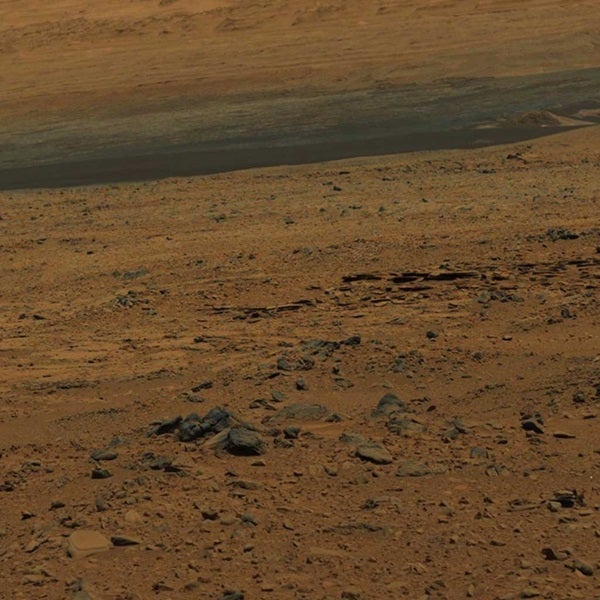One of the atoms most susceptible to oxidation is iron (Fe), which has a loosely bound outer shell electron that free oxygen easily can grab. When the iron is tied up in the typical kinds of volcanic rocks found in Hawaii, Iceland, or the dark regions of Mars (basalt), that outer electron stays bound in the structures of some of the minerals in those rocks — minerals like olivine and pyroxene, both of which are typical components of basalt.
However, when free oxygen comes in contact with those minerals — either from the breakdown of water molecules (H2O), carbon dioxide (CO2), or some other oxygen-containing source — the free oxygen steals iron’s outer electron. That process results in the formation of iron oxide minerals, usually at first as coatings on the outer surfaces of the original basalt. Most of these iron oxides, like the mineral hematite (Fe2O3), are bright brownish-red. This could be the origin of the Red Planet’s famous color.
As these coatings flake off and break up into smaller bits, many become small enough for wind to carry them. We think that these bits of oxidized iron minerals make up a significant component of the dust on Mars, although mineral measurements from martian rovers show that the dust contains a lot of unoxidized iron as well. Still, only a tiny fraction of oxidized material is needed, on the outer surface of a particle, to give it a reddish color.
Other important related questions are: When did that oxidation occur, and is it occurring today on Mars? We still don’t know the answers, but trying to find them out is a major focus of the missions exploring Mars today.
Arizona State University, Tempe










